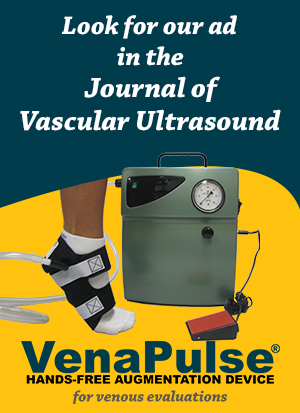
Bending, twisting, and hand cramps are some common precursors to MSD in medical diagnostic sonographers
When it comes to the typical vascular laboratory, one of the most dreaded tasks is the lower-extremity venous reflux exam. No matter how the patient is positioned, an RVT must either (a) strain herself to perform the augmentation, or (b) enlist the helping hand of a colleague. Both options pose different issues that can be detrimental to operations.
Ergonomic Impacts
Option A is the least ergonomic and has the potential to put the technologist out of work due to injury. Work-related musculoskeletal disorder (or MSD) is the number one cause of long-term illness absence in healthcare workers. In a survey, 84% of diagnostic medical sonographers suffer from some sort of injury. These injuries typically include carpal and cubital tunnel, epicondylitis of the elbow, neck and back strains, shoulder capsulitis, tendonitis, and tenosynovitis. Work activities known to cause MSD in sonographers include:
- Repetitive motion
- Forceful exertions or strain when pushing into a patient’s abdomen or compressing leg veins
- Awkward postures or unnatural positions, commonly from reaching over patients during bedside exams
Economic Impacts
When a technologist misses work due to work-related MSD, no one wins. Economic impacts include:
- Lost wages
- More medical insurance claims and Worker’s Compensation claims
- Increased sick and disability leave time
- Compromised patient care
Option B, though it is the more ergonomic of the two given options, may not be much better. This time, the colleague helping with vein augmentations not only takes on some strain, but also becomes unavailable for her other tasks in the clinic.
Ideally, technologists should make use of lighter, more maneuverable equipment that promotes better ergonomics. For compressing leg veins during lower-extremity reflux exams, a portable, hands-free augmentation device is a recommended substitute for manual compression.
Sources:
Sonographer Occupational Musculoskeletal Disorders: What Are They and How Can They Be Prevented: https://www.soundergonomics.com/pdf/Biodex.pdf
Ultrasound Ergonomics: http://www.sdms.org/pdf/ergowhitepaper.pdf
*Prospective comparison of the pneumatic cuff and manual compression methods in diagnosing lower extremity venous reflux: http://acimedical.com/wp-content/uploads/2012/10/VenaPulse-ref-2-abstract.pdf








